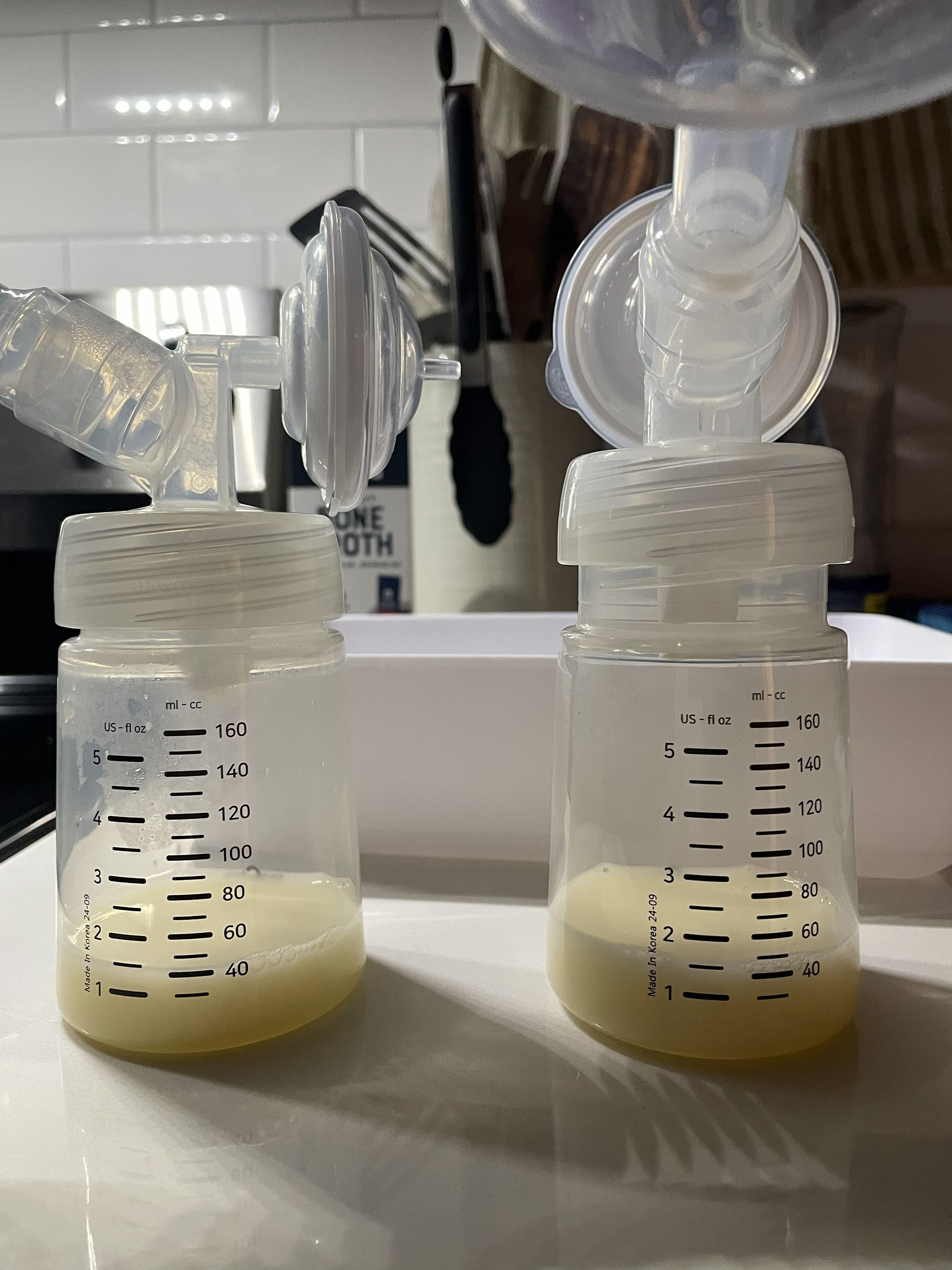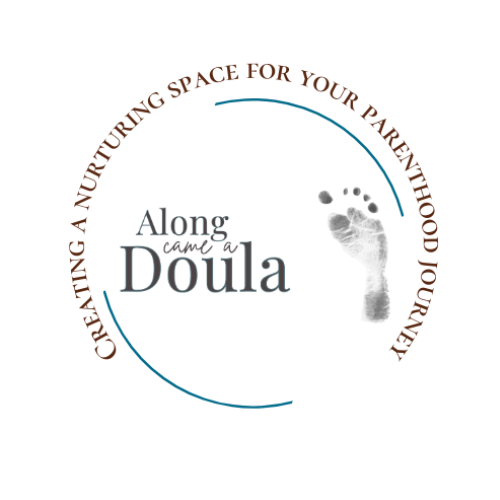Triple Feeding Newborn: What It Is & How to Survive It
Triple Feeding Explained: Essential Tips for New Parents to Survive and Thrive

You're feeding your baby at the breast, then pumping, then bottle-feeding pumped milk. And wondering how long you can sustain this.
Every feeding cycle takes 60-90 minutes. By the time you finish, it's almost time to start again. You're exhausted, overwhelmed, and questioning if you're doing something wrong.
Let me be clear: you're not doing anything wrong.
Triple feeding is a temporary feeding strategy, not a forever plan. And it's genuinely one of the most exhausting things a new parent can do.
I'm a postpartum doula supporting families across Northern Virginia and virtually nationwide. I've sat with many parents during triple feeding. I've seen the exhaustion in their eyes. The frustration when it feels endless. And the relief when we talk about what's temporary, what's optional, and when it's okay to stop.
This guide will help you understand what triple feeding is, why it happens, how long it typically lasts, and most importantly, how to survive it without losing yourself in the process.
What Is Triple Feeding (and Why Does It Happen)?
Triple feeding means you're doing three things at every feeding:
- Breastfeed (or attempt to breastfeed) your baby
- Pump to stimulate milk supply or collect milk
- Bottle-feed pumped milk or formula to ensure baby gets enough
It's called "triple" feeding because you're essentially feeding three times in one cycle.
Common Reasons for Triple Feeding
Low milk supply. Your body isn't producing enough milk yet, and triple feeding helps stimulate production while ensuring baby gets fed.
Latch issues. Baby can't transfer milk effectively at the breast, so you're supplementing with bottles while working on the latch.
Weight gain concerns. Your pediatrician is worried about baby's weight and wants to ensure adequate intake while you work on breastfeeding.
Premature baby. Preemies often lack the strength or coordination to breastfeed effectively at first.
Provider recommendation. Your doctor, midwife, or lactation consultant suggested it as a temporary solution.
Triple feeding is a medical feeding strategy. Not a sign that you're failing. It's a bridge. A temporary fix while you work toward your feeding goal.
The Reality of Triple Feeding: What No One Tells You
Here's what triple feeding actually looks like:
It's Exhausting
A single feeding cycle can take 60-90 minutes:
- 20-30 minutes nursing (or attempting to nurse)
- 15-20 minutes pumping
- 10-15 minutes bottle-feeding
- 10-15 minutes cleaning bottles and pump parts
Then you have maybe 30-60 minutes before the next feeding starts. If you're lucky, you can rest. More often, you're doing laundry, eating, or trying to function.
It's Emotionally Draining
You're working three times as hard for the same result. It's natural to feel frustrated, resentful, or defeated. Especially when other parents talk about how "easy" breastfeeding is for them.
It's Not a Failure
Triple feeding is a feeding strategy. Not evidence that your body is broken or that you're doing something wrong.
Most Families Don't Triple Feed Long-Term
This is temporary. Very few people triple feed beyond 6-8 weeks. Most transition to a simpler feeding method within 2-6 weeks.

How Long Does Triple Feeding Last?
The honest answer: it depends.
Typical timeline: 2-6 weeks
Goal-dependent: How long you triple feed depends on what you're working toward:
- Improving latch? May only need 1-2 weeks
- Building supply? Often 3-6 weeks
- Premature baby gaining strength? Could be several weeks
Some transition sooner, some take longer. Every baby and every body is different.
All timelines are valid. Whether you triple feed for 2 weeks or 2 months or decide to stop after 2 days, your choice is the right one for your family.
Practical Tips for Surviving Triple Feeding
If you're in the thick of triple feeding, here's what actually helps:
Simplify Where Possible
Don't sterilize between every use. Wash with hot, soapy water or run through the dishwasher. Most families only need to sterilize once a day (check with your pediatrician if baby is premature or immunocompromised).
Use a basin for pump parts. Keep pump parts in the fridge between sessions during the day. Wash once at night. This saves significant time.
Accept all help with non-feeding tasks. Let someone else do laundry, dishes, cooking, or hold the baby while you shower. You cannot do everything.
Pump While Bottle-Feeding (Sometimes)
If you're alone, you can pump while bottle-feeding in some positions. It's awkward but saves time. Use a hands-free pumping bra and prop baby safely.
This doesn't work for everyone. And that's okay.
Track Feedings to Prevent Overwhelm
Use a simple app or notebook to track:
- When you nurse
- How long you pumped
- How much milk you got
- How much baby took from the bottle
When you're exhausted, it's easy to lose track. Writing it down helps you see progress and gives you data to share with your lactation consultant.
Give Yourself Permission to Stop
You can stop triple feeding anytime. You don't need permission from your provider, your lactation consultant, or anyone else.
If triple feeding is destroying your mental health, affecting your ability to bond with your baby, or making you resent feeding, it's okay to stop.
Fed is best. And your wellbeing matters.
When to Reach Out for Support
Signs You Need Additional Help
Baby isn't gaining weight. This needs immediate attention from your pediatrician.
Painful feeding or pumping. Pain is a sign something isn't working correctly. A lactation consultant can help.
You're feeling hopeless. If triple feeding is affecting your mental health, reach out to your provider or a therapist.
You want to stop but feel guilty. A postpartum doula can help you process your feelings and make a decision that feels right for you.
How a Postpartum Doula Can Help
Postpartum doulas provide:
- Hands-on feeding support (helping you get comfortable with all three components)
- Emotional support and normalization (you're not alone in this struggle)
- Practical help (washing bottles, organizing your feeding station, bringing you snacks and water)
- Rest (holding baby so you can sleep between feedings)
- Lactation consultant referrals when needed
Whether you're in Ashburn, Leesburg, Reston, or using virtual support from anywhere, having someone who understands feeding challenges can make all the difference.
It's Okay to Change Your Plan
Triple feeding is temporary. But what comes after is up to you.
Your Options
Transition to exclusive breastfeeding. If latch improves and supply increases, you may be able to drop pumping and bottles.
Transition to exclusive pumping. Some parents find pumping and bottle-feeding less stressful than nursing. This is a completely valid choice.
Combo feed (breast and formula). Many families mix breastfeeding with formula. This is sustainable long-term and gives you flexibility.
Transition to formula. Formula is safe, nutritious, and a completely valid choice. If triple feeding isn't working, switching to formula is not giving up. It's choosing what works for your family.
There is no wrong feeding decision. There's only what works for you, your baby, and your family.

Frequently Asked Questions
How long should I triple feed?
Most families triple feed for 2-6 weeks while working on the underlying issue (latch, supply, weight gain). Some transition sooner, some take longer. Work with your lactation consultant and pediatrician to determine the right timeline for your family.
Can I stop one part of triple feeding?
Yes. As things improve, you can gradually drop components. Many families drop the bottle first if breastfeeding is improving, or drop breastfeeding if pumping and bottle-feeding feels more sustainable. All feeding paths are valid.
What if my milk supply isn't increasing?
Work closely with a lactation consultant to troubleshoot. Some people have true low supply due to medical reasons. If triple feeding isn't working after several weeks, it's okay to transition to exclusive pumping, combo feeding, or formula. Fed is best.
Is it okay to switch to formula?
Absolutely. Formula is safe, nutritious, and a completely valid choice. If triple feeding is affecting your mental health or family wellbeing, switching to formula is not giving up. It's choosing what works for your family.
How do I know when to stop triple feeding?
When it's no longer serving you. When the cost to your mental health, sleep, or family wellbeing outweighs the benefit. When your baby is gaining weight and you want to simplify. There's no wrong time to stop.
You Don't Have to Do This Forever
Triple feeding is one of the hardest things a new parent can do. It's physically exhausting and emotionally draining.
If you're in the middle of it right now, I see you. The 2am pump sessions. The tears while washing bottles. The guilt when you consider stopping. The frustration that this is so much harder than anyone told you it would be.
You're doing an incredible thing. And you're allowed to stop whenever you need to.
Whether you triple feed for 2 weeks or 2 months or decide today is your last day, your choice is the right one. Because you know your baby, your body, and your limits better than anyone else.
Need support through newborn feeding challenges?
Book a free discovery call to learn how postpartum doula support can help you navigate feeding decisions, get more rest, and feel more confident. Available in-home in Northern Virginia and virtually nationwide.
Or explore our postpartum doula services to see how we support families through the overwhelming early weeks.

Medical Disclaimer (Required): This article provides educational information about triple feeding based on postpartum doula experience. It is not medical advice. Always work with your pediatrician and lactation consultant when implementing or stopping triple feeding. If your baby is not gaining weight appropriately, contact your healthcare provider immediately.







